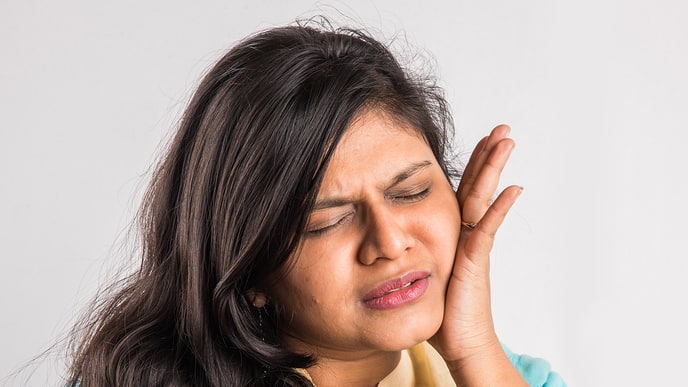What Is An Open Bite?
If you have an anterior open bite, your upper and lower front teeth have a gap between them even when your mouth is closed. If you have a posterior open bite, your back teeth don't touch when your mouth is closed. This could be causing various issues for you, like:
- A lisp or another type of speech impediment.
- It may affect the way you chew.
- It could affect how you swallow.
- It could affect the flow of saliva in your mouth.
- Your tongue may rest in a different position.
- And it could cause irregular wearing of your other teeth due to abnormal amounts of pressure put on them.
Your open bite is a type of malocclusion, meaning your teeth are not properly aligned. In an ideal world, the teeth match up perfectly, with the upper teeth resting just slightly above the lower teeth when your jaw is closed and the top surfaces of the molars lining up.
What Causes An Open Bite?
Various factors could contribute to an opening between the top and bottom rows of your teeth.
- Behavioural Risk Factors Extended use of a pacifier, thumb sucking, and tongue thrusting (pushing the tongue forward against the front teeth when swallowing) can cause an anterior open bite. The American Dental Association (ADA) points out that if the behaviour stops before permanent teeth come in, the bite can self-correct. Still, vigorous sucking with baby teeth can have long-term adverse effects.
- Developmental and Genetic Factors Some children may develop an opening in their bite when they have a mix of baby and permanent teeth, which tends to resolve when all of their adult teeth come in. Conditions that are more complicated to resolve can occur if there is an abnormal growth of the jaw or the skeleton or if teeth don't fully erupt out of the gums.
- Injuries Injuries that result in the jaw's misalignment can also cause various types of malocclusion, including, but not limited to, an open bite.
Treatment for Open Bite
Treating an open bite can be more challenging than treating other types of misaligned teeth. Minor cases can be treated with fixed orthodontic appliances. These appliances are generally only recommended for younger patients who are still growing.
If you've finished growing or your malocclusion is caused by a skeletal problem, like a jawbone that doesn't fit together quite right, corrective jaw surgery (orthognathic surgery) might be needed. During the surgery, a surgeon will remove a portion of the upper jaw and will realign the jawbones so that your teeth better align.
If you have a gap between your top and bottom teeth, your best option is to discuss with your dental professional to learn more about which treatment is best for you. They'll be able to identify the cause of your open bite and determine a treatment individually tailored to your specific needs. We're confident you and your dental professional will come to a decision about improving oral health that will make you smile.
This article is intended to promote understanding of and knowledge about general oral health topics. It is not intended to be a substitute for professional advice, diagnosis or treatment. Always seek the advice of your dentist or other qualified healthcare provider with any questions you may have regarding a medical condition or treatment.
ORAL HEALTH QUIZ
What's behind your smile?
Take our Oral Health assessment to get the most from your oral care routine
ORAL HEALTH QUIZ
What's behind your smile?
Take our Oral Health assessment to get the most from your oral care routine













